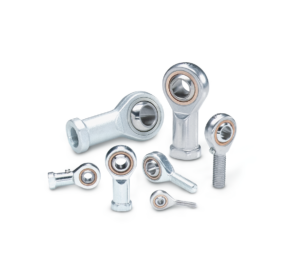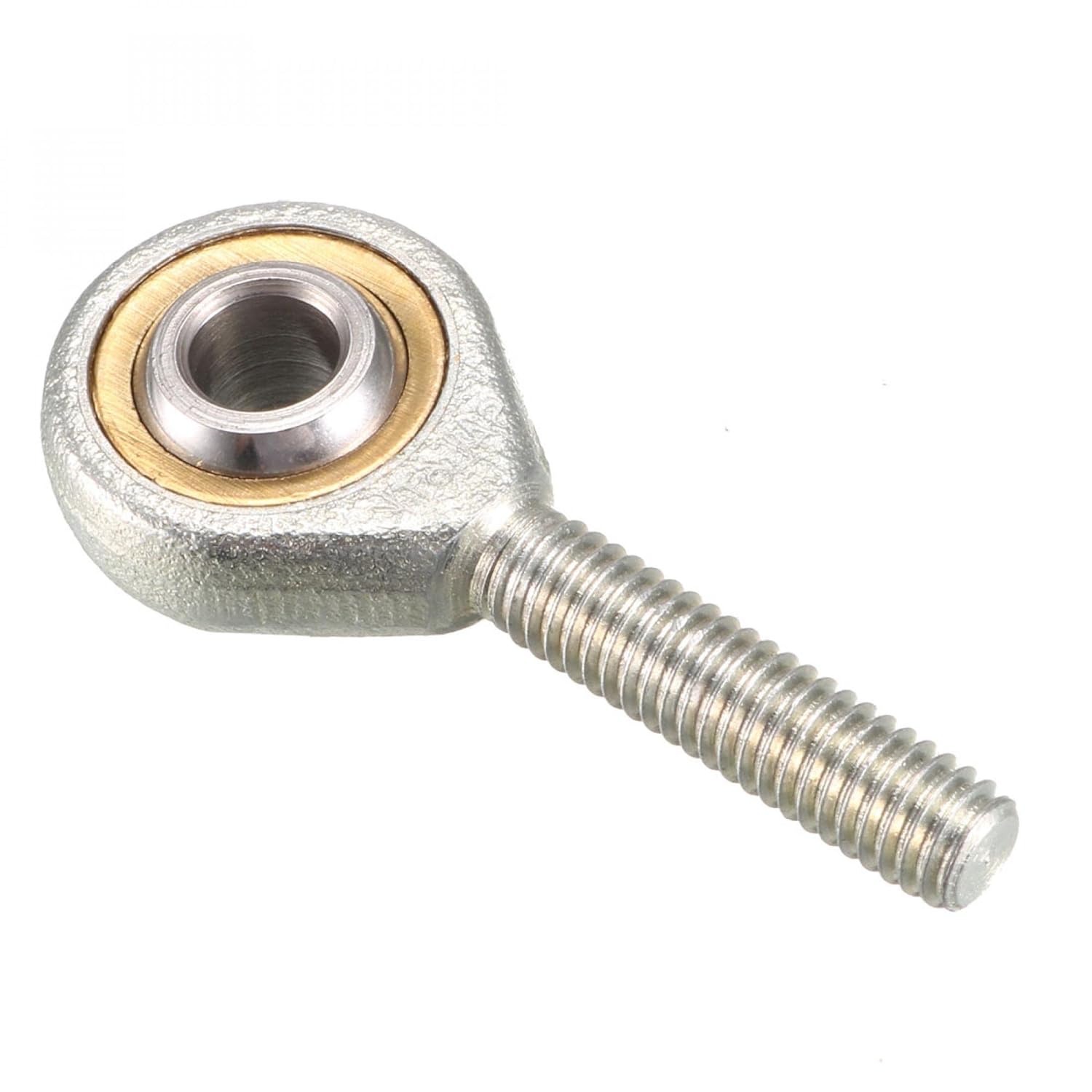
Selecting Size and Thread Type for Rod End Bearings
When choosing the appropriate size and thread type for a rod end bearing, several considerations are important:
1. Load Requirements: Determine the expected loads the rod end bearing will need to support. Choose a size and material that can handle these loads without deformation or premature wear.
2. Thread Direction: Consider whether you need left-hand or right-hand threads. This depends on the specific application and the direction in which the rod end bearing will be subject to forces or adjustments.
3. Thread Size and Pitch: Select the thread size and pitch that match the mating components or the mounting point. Ensure compatibility to avoid threading issues during installation.
4. Environmental Conditions: Consider the operating environment. If the rod end bearing will be exposed to moisture, chemicals, or extreme temperatures, choose a material and thread type that can withstand these conditions without corrosion or degradation.
5. Lubrication: Evaluate the lubrication method. Some rod end bearings have built-in lubrication features, while others require external lubrication. Ensure that the selected bearing and thread type align with your lubrication approach.
6. Misalignment Requirements: If the application involves misalignment, select a rod end bearing with appropriate articulation capabilities, which may require specific size and thread choices to allow for the necessary movement.
7. Compatibility: Ensure that the rod end bearing’s size and thread type are compatible with the connecting components, such as linkages, control arms, or push/pull rods.
8. Adjustability: In applications where adjustability is required, consider rod end bearings with male and female threads to allow for fine-tuning and alignment.
9. Regulations and Standards: Check if there are industry or safety regulations that dictate specific size or thread requirements for your application.
10. Maintenance: Consider ease of maintenance. Some rod end bearings have features that facilitate inspection and lubrication, which can be essential for extending their lifespan.
11. Cost and Availability: Finally, factor in the cost and availability of the chosen rod end bearing size and thread type. Ensure it fits within your budget and can be readily sourced when needed.
By carefully evaluating these considerations, you can select the most suitable rod end bearing size and thread type for your specific application, ensuring optimal performance and longevity.

Impact of Different Materials on Rod End Bearing Performance
Rod end bearings can be manufactured from various materials, and the choice of material significantly affects their performance. Two common materials used are stainless steel and carbon steel:
Stainless Steel Rod End Bearings:
1. Corrosion Resistance: Stainless steel rod end bearings offer excellent resistance to corrosion, making them suitable for applications in wet or corrosive environments, including marine and outdoor settings.
2. Hygienic Applications: They are ideal for applications in food processing, pharmaceuticals, and medical equipment due to their non-reactive and hygienic properties.
3. Temperature Resistance: Stainless steel can withstand a wide range of temperatures, making these bearings suitable for applications exposed to extreme heat or cold.
Carbon Steel Rod End Bearings:
1. Strength and Durability: Carbon steel rod end bearings are known for their high strength and durability, making them suitable for heavy-duty industrial applications such as construction equipment and agricultural machinery.
2. Cost-Effectiveness: They are often more cost-effective than stainless steel bearings, which makes them a preferred choice when the enhanced corrosion resistance of stainless steel is not required.
3. Machinability: Carbon steel is easier to machine and modify, making it a good choice for customized or specialized bearing configurations.
Ultimately, the choice between stainless steel and carbon steel rod end bearings depends on the specific application’s environmental conditions, load requirements, and cost considerations. Stainless steel is preferred for its corrosion resistance, while carbon steel excels in applications demanding strength and durability.

Rod End Bearings and Their Applications
Rod end bearings, also known as heim joints or rose joints, are mechanical components that consist of a spherical plain bearing with an inner ring and an outer ring. They are widely used in various mechanical applications due to their versatility and ability to provide articulation and movement in different directions. Here are some common applications of rod end bearings:
- Linkages: Rod end bearings are often used in linkages and control systems to transmit motion or force. They provide a connection point between two components, allowing for angular misalignment and smooth movement.
- Automotive Suspension: In automotive applications, rod end bearings are used in suspension systems to connect control arms, sway bars, and other components. They accommodate both rotational and pivoting movement.
- Aerospace: Rod end bearings play a crucial role in aircraft control systems, such as ailerons, flaps, and rudders. They ensure precise and responsive control of the aircraft’s movable surfaces.
- Construction Equipment: Heavy machinery, like cranes and excavators, utilizes rod end bearings in their control systems. These bearings provide flexibility and robustness in handling heavy loads and dynamic forces.
- Industrial Machinery: Various industrial machines, including conveyor systems, manufacturing equipment, and robotic arms, use rod end bearings to enable movement and articulation in mechanical linkages.
- Marine Applications: On boats and ships, rod end bearings are employed in steering and control systems. They withstand the harsh marine environment and provide reliable performance.
- Motion Control Systems: In applications like 3D printers, CNC machines, and robotic arms, rod end bearings are used to create flexible and precise motion control mechanisms.
- Hydraulic Cylinders: Rod end bearings are used in hydraulic cylinders to connect the piston rod to the external components. They allow for both linear motion and misalignment.
- Off-Road Vehicles: In off-road vehicles such as ATVs and dirt bikes, rod end bearings are used in suspension systems to absorb shocks and provide articulation over rough terrain.
Rod end bearings are valued for their ability to handle both static and dynamic loads, accommodate misalignment, and offer long-lasting performance in a wide range of applications.


editor by CX 2024-04-30